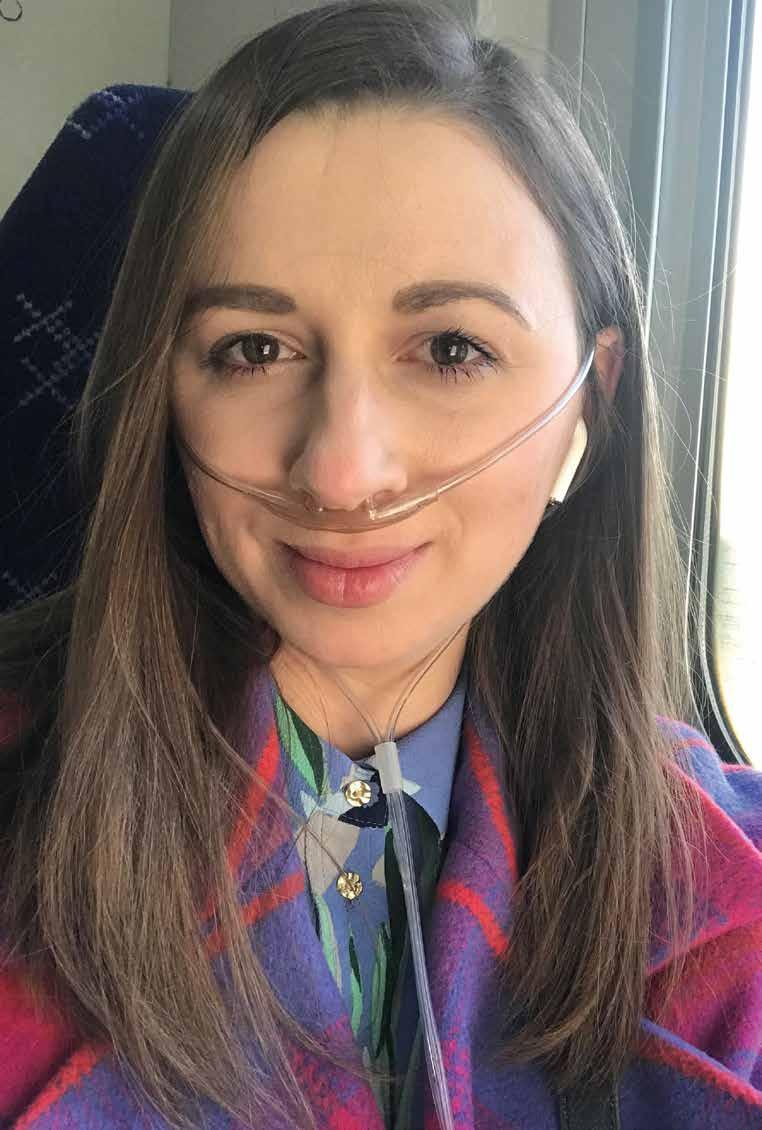
11 minute read
expert advice The treatment journey of sildenafil
from Emphasis Summer 2023
by PHA UK
It’s the most prescribed treatment for pulmonary hypertension, but the origins of sildenafil may just surprise you. Consultant Pharmacist Neil Hamilton fill us in…
Ihave mentioned in previous Emphasis articles how well connected the PH community is here in the UK, and the subject of this column provides another example of this.
The PHA UK office receives many questions from members on every aspect of living with the condition. These may be in person, via emails, phone calls or the highly valued ‘Listening Line’ service [see p48 for details].
The office team always answer your queries and offer the best advice, but clinical questions may need to be answered by a clinician – so the team know they can easily refer the query to one of the UK’s specialist centres.
This is the case here, when they spoke to me about this issue of Emphasis, having had a number of members asking questions on the same theme. Coincidentally, our pharmacy team has also taken two queries, only this week, asking for advice about taking sildenafil (or tadalafil) for PH, but struggling with erectile dysfunction (ED).
As some of you may already know, sildenafil was not developed specifically for PH (like, for example ambrisentan or selexipag). In fact, sildenafil was not even originally intended for use in ED.
During the 1980s, the manufacturer, Pfizer, was very active in cardiac medicine research. They took ideas looking at potential treatments for heart failure and angina to try and find a new medicine. The result was the family of medicines which includes sildenafil (and tadalafil); the Phosphodiesterase-5 inhibitors. We often call them PDE5 inhibitors for short.
The way that PDE5is work is by opening up blood vessels. As such, sildenafil was originally used in clinical trials as a treatment for angina. Angina causes tight, dull or heavy chest pain. This is because blood vessels close to the heart are narrowed or blocked, resulting in the heart not receiving enough oxygen. Some patients are referred to us, suspected of having PH, having previously been mis-diagnosed as having angina (as this is much more common and has these similar symptoms).
During the clinical trials into using sildenafil for angina, it was found that sildenafil had a limited benefit. In addition, the use of nitrate sprays or tablets (e.g GTN) during angina attacks caused problems with low blood pressure and dizziness.
Interestingly, men taking sildenafil in the trial were reporting ‘side effects’ of harder, stronger erections. The relatively quick onset and short duration of action would also suit use in erectile dysfunction (ED) much more than prevention of angina.
Consequently, Pfizer decided to turn their attention to this unexpected side effect and further trials into the use in ED proved far more successful. In the mid-1990s, sildenafil was approved and licensed across the world. It remains standard and important advice for our patients NOT to ever use GTN sprays or tablets once prescribed a PDE5i.
Soon after the approval for ED, scientists began researching sildenafil’s use for other conditions, including PH. Whilst sildenafil will open up blood vessels around the body, it has a greater effect in certain parts. The penis is one, but crucially for PH, so are the lungs.
The first studies took place in 1998-2000 and most UK PH centres enrolled patients into the main clinical trial of sildenafil in PH. Sildenafil was approved in the UK in 2005 and remains the most prescribed treatment for PH.
We can prescribe sildenafil on its own (called monotherapy) or in combination with other treatments, depending on the type of PH the patient has. There are different strengths and brands of sildenafil tablets used. These are all completely safe for women to use (packaging and leaflets in the boxes may say otherwise due to the intended use for ED).
As sildenafil is so widely used, it is understandable that there will be men prescribed sildenafil who may also be struggling with ED. The dose prescribed for PH is usually 20mg or 25mg three times a day (occasionally higher doses are needed). These doses may not be sufficient for ED but you will be prescribed the lowest effective dose.
Sildenafil is available to buy from your local (or online) pharmacist after a consultation, but if you are already taking a PDE5i, it is possible that you will be advised to go to the GP or sexual health clinic.
At the specialist centres, we are often asked for advice for patients already prescribed a PDE5i. The best answer is about timing of the dose, as we would advise patients to substitute the regular PH sildenafil with a dose for ED, regardless of the time of day.
Taking a dose for ED in addition to regular dosing could result in side effects, such as low blood pressure or headache. Tadalafil (either 20mg or 40mg) is only taken once a day for PH because the effect of the dose lasts much longer in the body than sildenafil.
If an additional dose of sildenafil (or tadalafil) is prescribed for ED, I would advise to leave 12 hours after the ED before taking the next dose of tadalafil for PH, again to avoid side effects.
If patients are unable to take PDE5i for whatever reason but have ED, there are other options available. It is firstly worth considering lifestyle choices; lose weight if you're overweight, stop smoking, eat a healthy diet, exercise daily, and try to reduce stress and anxiety. If you have explored these, your GP or local sexual health clinic can advise you.
Other options include a vacuum pump and alprostadil (available as a cream and injection). Alprostadil is a different type of medicine which works in a similar way by opening up the blood vessels in the penis.
We know that PH affects patients in many ways and this is one crucial aspect which should not be underestimated. For anyone interested in reading more about how PH might affect your physical relationships, I would recommend the Intimacy & PH book produced by the PHA UK. This book contains a lot of information, along with insights and reflections from patients. .
This book is available for free by scanning this code definitely changed my perspective on life and priorities for future and have learnt to live to the full every single day. I am strong, determined, and a courageous phighter. adapting or accepting your new life, as it may be different every day, but what helps me is to do something nice to focus on each day. Basically, start living with hope. always full of information related to my illness and what comes with it.
Aleksandra Boyle is 34 and lives in Glasgow. She was diagnosed with PH in November 2018, and also lives with Pulmonary Veno Occlusive Disease (PVOD).
Aleksandra has been a PHA UK member since 2019.
Hi, Aleksandra! Who is in your support network?
I am fortunate to have my mum and my family to support me in everyday living. I also receive support from a health visitor, women’s aid worker, social worker, GP, my local pharmacy, my daughter’s nursery, and of course my medical team at the Scottish Pulmonary Vascular Unit in Glasgow.
What does being a ‘phighter’ mean to you?
What advice would you give to someone newly diagnosed with PH?
What’s the best thing about being a PHA UK member?
What’s your favourite part of this magazine?
It means that I now appreciate each day a lot more, especially each moment I have with my daughter. I have
Trust your medical team. Open up and allow others to help you. Allow your family or friends to help you with literally anything within your everyday living. Yes, it’s hard. Try and learn how to speak up and be verbal about your difficulties and needs. You will never stop
Feeling connected to the people that are experiencing similar health and life changes to mine. I don’t feel I am alone with this. I know I have support in being a member and I can call or message the team, or look up the social media channels that are
The ‘people’ stories, about how other PH members cope and how they have adapted to life with PH. I like to see if there is anything there I can pick up and use in my life too. I like to see that people remain strong and brave and they go forward in their lives, and that helps me and reassures me.
You’ll find more ‘Meet the member’ profiles on our social media channels. Want to answer our questions?
Inspired by her little sister’s journey, has written and designed a book to help children come to terms with pulmonary hypertension.

Fatima is now 11, but she was diagnosed with PH in 2017, when she was just five years old. It was a huge shock to us all as a family, and it literally spun out of nowhere. We were thrown into a puddle of the unknown and we had to swim our way out of it.


I think it was very hard for us to all understand what PH was and the effects it could have both long-term and short-term. Words like ‘terminal’, and ‘life-threatening’ were used, and my sisters and I were all still children at the time.
There’s a lot of us (five sisters in all!) and we always lean on each other, so it was nice to have them around during that fear of the unknown. We cherished the small things more because we knew that they weren’t promised.
Fatima has definitely adapted over time, but it has stopped her from doing a lot of things. She’s at the age now where she is coming to terms with and understanding what PH really is, and she can see how it affects her body more now because she is getting older. You can’t really expect children to understand fully though because even as an adult I sometimes can’t get my head around it.
Fatima is an outgoing and outspoken girl. She has such a strong personality and is hands down the funniest person I have ever known. She is absolutely hilarious. She is very passionate and very creative. She loves anything art-based. She loves singing and she loves animals.
Exploring PH with KiKi the Koala will be available to order soon from the PHA UK online shop, with all proceeds coming back to our charity. Keep an eye on our social media channels for details. Plans are also underway to make the book available from Great Ormond Street Children’s Hospital, and we’ll be working with Maryam on some exciting future collaborations too. Watch this space.

Fatima is literally my best friend; we do everything together. We like going out for days out in central London, we like going out for food, we do painting, and we have pet bunnies that we spend time with together.
The idea for the book came from a university project. I’ve just finished a degree in advertising and brand design and as part of the course, I was asked to create something I was passionate about.
I came to the realisation that my passion lays with helping people who don’t feel like they have access to the help that they need.
Then I looked at Fatima and how much being diagnosed with PH affected her, partly because she didn’t really understand what it was. So, it all stemmed from there.
KiKi herself is definitely a reflection of children with PH, so they don’t feel isolated, and so they can relate to someone else and not be the child that is ‘different’.
But she also becomes something bigger, in that she’s a support system for the family as well, and I hope the book can be used as a tool to have important conversations.
The book is aimed at children aged around three to nine. Readers can follow KiKi’s journey through learning how to cope with pulmonary hypertension and learning just how special KiKi is – just as they are too.
Because the book is based on my sister’s journey, KiKi is essentially Fatima in a koala bear. I chose a koala as the main character because people think koalas are bears but they’re actually marsupials. That made me think of children with PH; just because they may look happy and healthy, it doesn’t tell the full story. It’s not always what you see on the surface; there can sometimes be more.
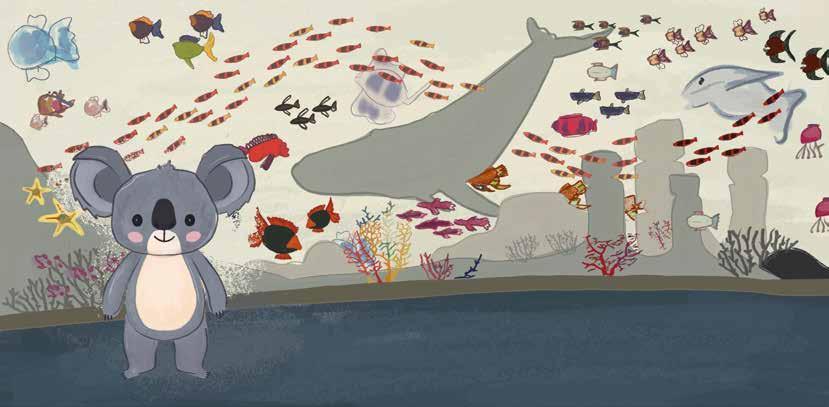
When I spoke to Fatima about what I was doing I think that she was very happy to finally have a say in how she was being portrayed, rather than being dictated by these stereotypes that you have when you find out you’re a child with a ‘condition’.
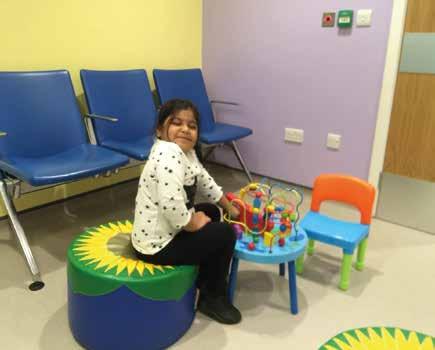

I would say that she is pleased and happy and excited to see where KiKi goes and how she grows. I hope that she grows with her, and I think she is proud of me for doing this.
I’m pleased to say that when the book was marked as part of my degree, I got a really good grade. But it’s been about much more than that; and I’m excited so see where this all goes. I will always refer to this as my ‘passion project’.
To find out more about Kiki the Koala, visit www.myphfamily.com
Maryam has created a range of KiKi merchandise to help children and families feel connected to a special community, which you’ll also find on this website.
Profits from all purchases are kindly being donated to the PHA UK.
Paul Sealey is planning to celebrate a year since his pulmonary endarterectomy by running the Cardiff Half Marathon –something he never thought he’d be able to do. The bus driver from Wales explains why fundraising for our charity will be a meaningful end to a tough journey with his health…
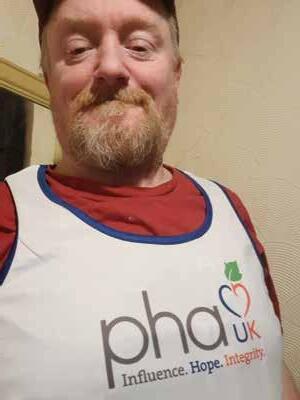
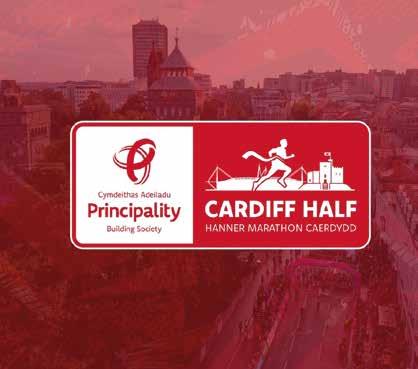

My symptoms started eight years ago, when I was 40. I discovered I had bilateral pulmonary embolism (blood clots) in 2015, and they kept recurring, which is what led to me being diagnosed with chronic thromboembolic pulmonary hypertension (CTEPH) in June last year.
I had the pulmonary endarterectomy - surgery to remove the clots - just a few months later in October.
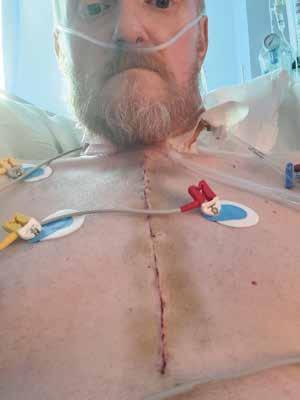
I was a little bit apprehensive when the surgery was mentioned, but I didn’t feel there was a choice, if I wanted to live.
The symptoms had completely controlled my life for many years. I’m a bus driver and whilst I was fine when I was driving, because I was sitting down, I would dread going on my break because I’d have to walk.
My whole life was a real struggle and it kept getting worse as time went by.
By the time I had the pulmonary endarterectomy (PEA), the clots had calcified because they had been there for so long, and some were on the extremities of my lungs, so I was warned the surgery may not be able to remove them all. But they were all taken, so I was 100% cured by the operation.
I recovered really well from the PEA. I was told that I would be bed-ridden for a few weeks when I came out of hospital, but I was able to start going out very quickly.
Following my recovery, I wanted a way of forcing myself to improve my fitness. I had no stamina and even though the operation had been a complete success, I knew that building my fitness and my stamina back up would be hard.
I’ve never been a runner, so I thought that entering a half marathon would be a good way to push myself out of my comfort zone and give me an incentive to train. I also thought it would be a good opportunity to raise money for the PHA UK.
I was conscious not to over-do things, so I started by building up my stamina with walking, increasing my daily steps gradually. I also started using an exercise bike at home and lifting weights to help improve my strength.
I then started jogging in May and I will be training through the summer until the event in October.
I’ll be doing the half marathon with my son, Josh, who is 25. I’m really happy that he’s offered to run with me.
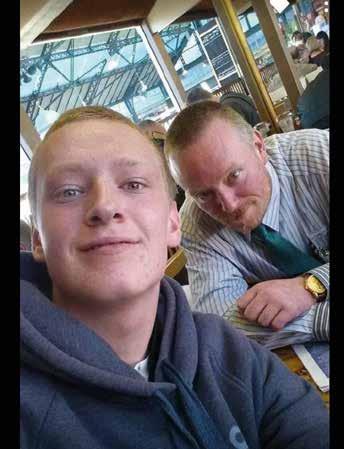
As a regular runner he won’t need to do much training as I’m setting myself a very realistic target. I aim to complete it in three-and-a-half hours, which isn’t much faster than walking. I’ll not be pushing myself too much.
The day of the run will be just short of a year since my operation and there’s a massive significance in that.
It means that in less than a year, I will have gone from having a life-saving operation to running a half marathon. It’s going to be a big personal achievement.”
The Cardiff Half Marathon takes place on 1st October. Paul is collecting sponsorship online at www.bit.ly/PaulCardiffHalf

